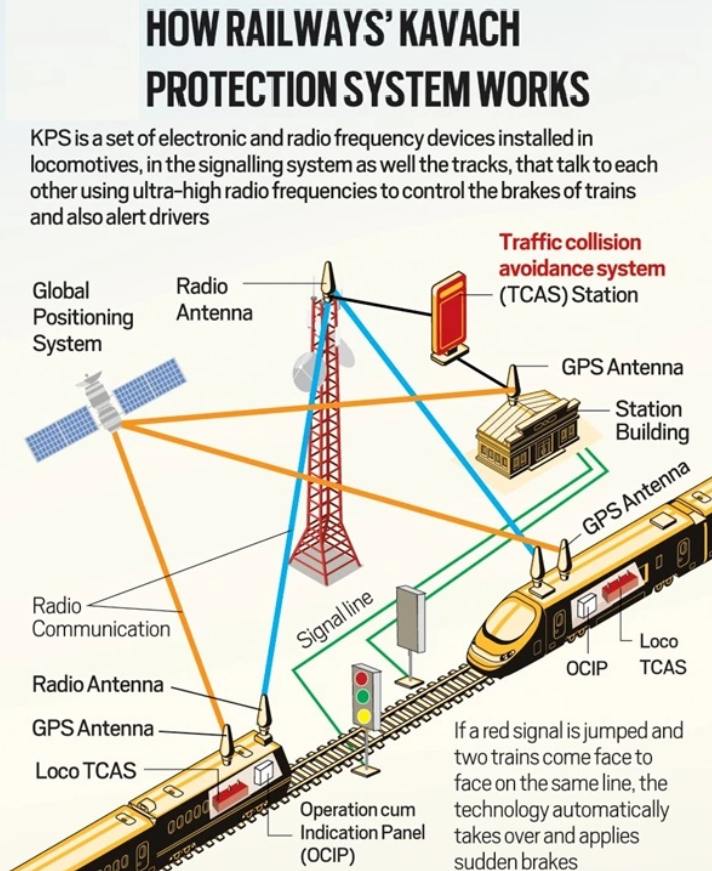12 April 2025 : Daily Current Affairs
1. In the age of age-tech
(Source – The Hindu, International Edition – Page No. – 10)
| Topic: GS2 – Social Justice |
| Context |
|
Rising Elderly Population in India
- India has around 15 crore people aged 60 and above, expected to grow to 32 crore by 2050.
- This demographic shift requires targeted interventions to address elderly-specific issues.
Social Isolation and Emotional Well-being
- Changing family structures and the shift to nuclear families have led to isolation among seniors.
- Many elderly individuals live alone or with working children, leading to loneliness and depression.
- WHO reports that 1 in 4 older people experience social isolation, which impacts their physical and mental health.
Healthcare and Age-related Diseases
- Ageing increases the risk of chronic diseases like diabetes, arthritis, heart ailments, and dementia.
- Over 80 lakh Indians suffer from dementia, with limited early diagnosis and cognitive care facilities.
- Rural areas especially lack affordable geriatric healthcare services and specialists.
Financial Insecurity
- Many seniors lack pension or retirement benefits, especially those from the informal sector.
- Financial dependence on children or others can lead to economic vulnerability and insecurity.
- The absence of structured post-retirement financial planning further worsens their situation.
Loss of Purpose and Work Opportunities
- Many retired professionals still have the skills and willingness to contribute, but lack suitable platforms.
- A growing number of seniors seek part-time or purpose-driven roles to stay engaged.
- Platforms are emerging to bridge this gap, but the demand is much larger than the supply.
Accessibility and Mobility Challenges
- Physical limitations such as knee problems affect the independence of the elderly.
- Lack of elder-friendly infrastructure in public spaces and homes limits their mobility and social participation.
- Basic tasks like sitting or standing may require assistance due to joint issues.
Way Forward
- Investment in age-tech, cognitive care, and healthcare services is crucial.
- Government and private sector must promote inclusive policies and community engagement.
- Supporting financial independence, mental well-being, and physical health is key to ageing with dignity.
| Practice Question: Analyze the challenges faced by the elderly population in India and evaluate the effectiveness of existing policies aimed at addressing their needs. (150 Words /10 marks) |
2. Trade wars benefit no one; we believe in power of open markets, free and fair competition
(Source – The Hindu, International Edition – Page No. – 5)
| Context |
|
U.S. Tariff Policies and Trade Wars
- Trade wars benefit no one, and tariffs hurt both consumers and businesses.
- Italy hopes for zero tariffs, advocating for open markets, fair competition, and a level playing field for all.
- The U.S. decision to pause its tariffs plan for 90 days is seen as a positive step towards negotiations.
- Italy aims to engage constructively with the U.S., prioritizing dialogue and avoiding transatlantic divides.
EU-India Bilateral Trade and Investment Agreement (BTIA)
- Italy and the EU are optimistic about finalizing the EU-India BTIA by the end of the year.
- Political momentum for the agreement is stronger now, with support from both the European Commission and Indian leadership.
- Previous delays in the BTIA were caused by issues like tariffs and market access for wine, spirits, agriculture, and dairy products.
- Italy seeks a mutually beneficial and balanced trade agreement with India, recognizing that every trade relationship is unique.
Middle East-Europe-India Corridor (IMEC)
- The IMEC’s full potential depends on peace and stability along the route, particularly between the UAE, Saudi Arabia, Jordan, and Israel.
- Until peace is achieved, it will be challenging to realize the full potential of the corridor.
- However, Italy views the IMEC as a beacon of hope, acting as a catalyst for regional stability.
- Italy is offering the port of Trieste as a hub for the project and focusing on key infrastructure development.
| Practice Question: Examine the significance of the India-EU Bilateral Trade and Investment Agreement (BTIA). What are the key challenges and opportunities in finalizing this agreement? (150 Words /10 marks) |
3. Kavach 5.0 to Boost Mumbai Local Train Capacity by 30% with Enhanced Safety and Efficiency
(Source – Indian Express, Section – Express Network, Page – 05)
| Topic: GS3 – Science & Technology |
| Context |
|
Analysis of the news:

About Kavach System:
- It is an indigenously developed Automatic Train Protection (ATP) system.
- Kavach was developed by the Research Design and Standards Organisation (RDSO) under Indian Railway (IR) in collaboration with Medha Servo Drives Pvt Ltd, HBL Power Systems Ltd and Kernex Microsystems.
- It is a set of electronic devices and Radio Frequency Identification devices installed in locomotives, in the signalling system as well the tracks, that talk to each other using ultra-high radio frequencies to control the brakes of trains and also alert drivers, all based on the logic programmed into them.
- Since 2016, the railways have been carrying out field tests for Kavach on passenger trains.
- Applications:
- It has been designed to assist locomotive pilots in avoiding Signal Passing At Danger (SPAD) and overspeeding.
- The system can alert the loco pilot, take control of the brakes and bring the train to a halt automatically when it notices another train on the same line within a prescribed distance.
- The device also continuously relays the signals ahead to the locomotive, making it useful for loco pilots in low visibility.
- It also controls the speed of the train by an automatic application of brakes in case the loco pilot fails to do so.
- It helps the loco pilot in running the train during inclement weather conditions such as dense fog.
How Kavach Enhances Train Safety
- Kavach functions as a critical safety mechanism by automatically applying brakes if the loco pilot fails to adhere to speed limits, especially during bad weather conditions.
- This ensures smoother and safer operations across the rail network.
Boosting Capacity and Reducing Congestion
- Union Minister Ashwini Vaishnaw highlighted that by reducing the gap between two trains from 180 seconds, the railways can run 30% more trains, addressing the growing demand of Mumbai’s densely packed local rail service, which currently handles around 3,500 train services daily and serves 80 lakh commuters.
Three-Pronged Implementation Strategy
The upgradation plan for Mumbai locals will unfold in three phases:
- Infrastructure improvement – ₹17,000 crore worth of projects are already underway.
- Deployment of better technology – like Kavach 5.0.
- Introduction of modern trains – to increase service frequency and commuter comfort.
A Step Toward Safer, Smarter Urban Mobility
- Once implemented, Kavach 5.0 is expected to transform Mumbai’s suburban rail experience by enabling frequent, safer, and more reliable services, contributing to the long-term vision of smart urban transport in India.
| Practice Question: Discuss the role of technology in enhancing railway safety and capacity in India with special reference to the implementation of Kavach 5.0 in Mumbai’s suburban rail network. How can such innovations contribute to sustainable urban mobility? (250 Words /15 marks) |
4. The Magic of Indian Silk
(Source – https://pib.gov.in/PressReleasePage.aspx?PRID=2120877 )
| Topic: GS3 – Indian Economy |
| Context |
|
Introduction to Silk and Its Significance
- Silk is an important part of India’s history, tradition, and art.
- Indian silk sarees, such as those from Kanchipuram and Bhagalpur, reflect the country’s rich culture.
- The craftsmanship behind these sarees is passed down through generations of artisans.
Sericulture Process
- Sericulture refers to farming silkworms to produce silk.
- Silkworms are raised on leaves from mulberry, oak, castor, and arjun trees.
- After about a month, silkworms spin cocoons which are boiled to extract silk threads.
- These threads are twisted into yarn and woven into fabric, turning simple silkworms into valuable silk.

Economic Role of Silk in India
- India is the second-largest producer and the largest consumer of silk globally.
- Mulberry silk is produced in several states like Karnataka, Andhra Pradesh, and Tamil Nadu.
- Non-mulberry silk, also known as Vanya silk, is produced in states like Jharkhand and Orissa.
- Silk production supports rural employment and contributes to foreign exchange.
- Silk accounts for only 0.2% of the world’s textile production but plays a vital role in economic development.
Growth of India’s Silk Market
- India’s silk production has steadily increased, from 31,906 MT in 2017-18 to 38,913 MT in 2023-24.
- The area of mulberry plantations grew from 223,926 ha in 2017-18 to 263,352 ha in 2023-24.
- Silk exports increased from ₹1,649.48 crores in 2017-18 to ₹2,027.56 crores in 2023-24.

Government Schemes Supporting Silk Development
- The Silk Samagra Scheme aims to improve silk production by enhancing quality and productivity.
- The scheme includes research, training, technology transfer, seed organizations, market development, and quality certification.
- Silk Samagra-2, with a budget of ₹4,679.85 crores, extends these efforts.
- Other supporting schemes include the Raw Material Supply Scheme and the National Handloom Development Programme, which help weavers and silk fabric producers.
- The Scheme for Capacity Building in the Textile Sector, SAMARTH, aims to train 3 lakh people.
Conclusion
- The growth of India’s silk industry is supported by various government schemes.
- These efforts help farmers, weavers, and rural families, ensuring India’s silk industry thrives.
- With further support, India can become a global leader in silk while preserving its traditional silk-making practices.
| Practice Question: Discuss the role of sericulture in India’s economy, highlighting its contribution to rural employment and foreign exchange. (250 Words /15 marks) |
Prelims Facts
1. DRDO does release trials of long-range glide bomb
(Source – The Hindu, International Edition – Page No. – 5)
| Context |
|

Long-Range Glide Bomb ‘Gaurav’:
The Long-Range Glide Bomb (LRGB) ‘Gaurav’ is an indigenously developed precision-guided munition by India’s Defence Research and Development Organisation (DRDO).
Key Features:
- Type: 1,000 kg class glide bomb
- Range: Up to 100 km
- Launch Platform: Sukhoi Su-30MKI aircraft
- Guidance System: Hybrid navigation combining inertial navigation system with GAGAN/NavIC satellite guidance and semi-active laser homing
- Warhead Options: Pre-fragmented or penetration-blast types
The ‘Gaurav’ glide bomb enhances the Indian Air Force’s strike capabilities, allowing for precise targeting of fortified structures and strategic installations.
2. Scientists Unveil Largest Functional Brain Map, Paving the Way for Breakthroughs in Neuroscience
(Source – Indian Express, Section – The World, Page – 16)
| Context |
|
Analysis of the news:
Methodology: From Sci-Fi Clips to Synaptic Networks
- The process began with a mouse genetically engineered to make its neurons glow when active, which was shown clips from movies like The Matrix.
- This allowed researchers to capture neural activity during visual stimulation.
- A tiny section of the mouse’s visual cortex was then sliced into over 25,000 layers, imaged with electron microscopy, and reconstructed digitally.
Tech Meets Neuroscience
- A collaborative global effort involving over 150 researchers, the project used AI tools developed by Princeton to trace neural connections, vividly coloring each neuron’s wiring to differentiate them.
- The mapped fibers, if stretched out, would measure over 5 kilometers in length, resembling tangled spaghetti strands.
Scientific Significance and Future Potential
- This research, published in Nature, is a foundational step toward decoding the human brain.
- It could eventually help in identifying abnormal neural patterns associated with neurological disorders.
- Scientists believe mapping an entire mouse brain is the next milestone, potentially unlocking unprecedented insights into brain function and disease.
Open Access for Global Collaboration
- The 3D brain reconstruction has been made publicly available, allowing scientists worldwide to explore and build upon the findings.
- It marks a new era in neuroinformatics, where data-driven exploration could accelerate discoveries in brain science.



